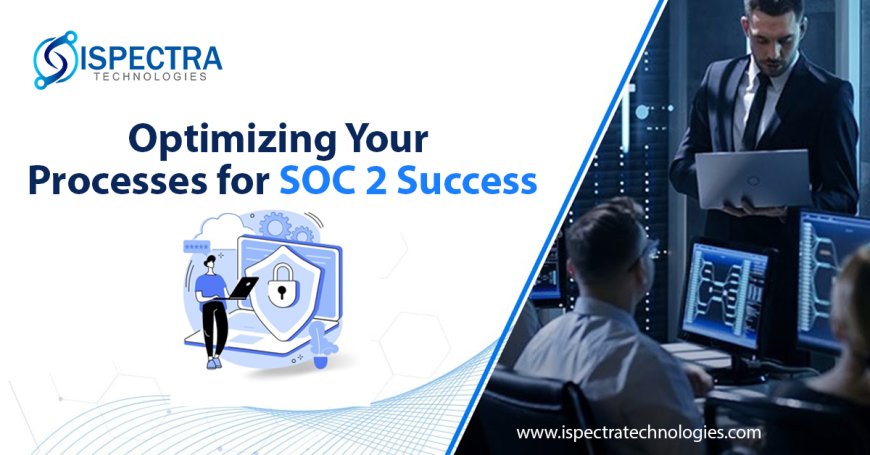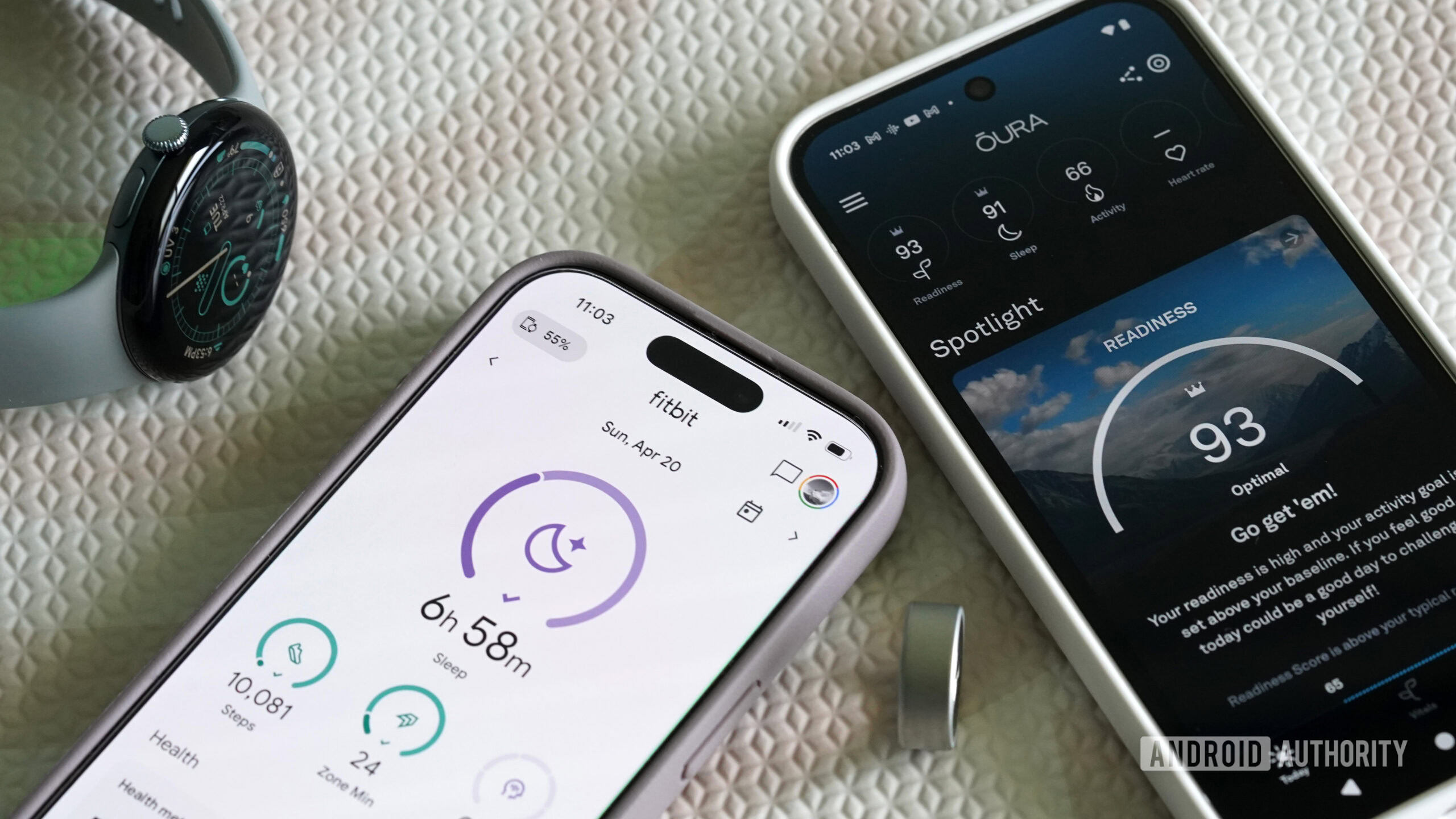Optimizing Your Processes for SOC 2 Success
For a service organisation, it is quite reasonable to assume that your risk environment has evolved over the last couple of years. But as new threats appear in the cyberspace, customers and partners expect the companies they deal with to have serious attitudes to cybersecurity and privacy. Thus, it is time to refresh your organization’s IT governance and risk assessment process and improve your SOC 2 report.

For a service organisation, it is quite reasonable to assume that your risk environment has evolved over the last couple of years. But as new threats appear in the cyberspace, customers and partners expect the companies they deal with to have serious attitudes to cybersecurity and privacy. Thus, it is time to refresh your organization’s IT governance and risk assessment process and improve your SOC 2 report.
Top Seven Strategies to move your SOC2 Audit Quicker and Effective
Improving your SOC 2 report provides confidence, which is crucial for success, and makes it possible for you to stand out from the competitors especially when bidding for service contracts.
Step 1: Pre-audit preparation
In this SOC 2 audit process, pre-audit planning plays a crucial role for organizations as they cannot afford to get the basics wrong. As the initial stage of the audit, this phase largely defines the overall approach you are going to take when addressing all the challenges in the audit sphere.
A. The Significance of a Detailed Readiness Review
Think of going to a school exam without paintng out the scenario — quite suicidal, isn’t it? Likewise, starting a SOC 2 audit process without a proper readiness assessment can create problems that do not need to exist. A readiness assessment means the assessment of your security controls, policies as well as processes in accordance with the SOC 2 audit criteria of the chosen TSCs.
B. Recognising open doors and weaknesses in your Security Programmes
A readiness assessment is akin to a moving spotlight which will highlight the weak links in your security chain. Being able to detect blind spots in the security functions before the auditors do it’s always desirable and possible. In this way, you not only strengthen your organizational data protection but also lay down the foundation for the successful audit.
C. Reducing Paperwork and Documentation of Evidence
Proper documentation means that there should be orderliness and comprehensiveness of the records is how you get across to the audit criteria from the security measures. Simplify the process through the collection of documentation such as policies, procedures and control description under one location. It has the added advantage of making information which is vital to the auditors easily accessible and speeds up the evaluation process.
D. Co-ordinating with matters to Guarantee Congruency
A SOC 2 audit is not limited to the company’s IT division. It is a comprehensive audit for an entire company, including areas as HR, Data Management and more. You can cooperate with other departments and employees, with the purpose of checking the coordination and common understanding of the applied security precautions. Such alignment helps to avoid confusion during the audit, ensuring data security and compliance.
Reduction of risk exposures, minimizing documentations, improvement on cross functional coordination and assessment of readiness enables one to prepare well for the SOC 2 audit process.
Step 2: Clearly define scope and objectives
When you are in the middle of SOC 2 audit process, there is such a critical point to consider the scope and goals of the audit. The step is strategic, for it acts as the map that directs your audit so that it obtains the right direction and approach.
A. Ascertaining the extent of the audit depending on the TSC
The TSC comprises the framework for SOC 2 audits by establishing the standards with which your organization’s controls will be assessed. To reduce the time taken in the audit and effectively meet the best TSC that suits your business operation and that will meet the expectations of your customers, be sure to select the most appropriate one.
B. Audit scope in relation to your organizations services and systems
One area of weakness is the basic approach of trying to bring under the audit framework as many aspects as possible of your organization. Do not go with the general approach; make sure that the audit scope is very much specific with regard to the services offered and the systems that come in contact with customers’ data as well as those that pose a threat to their security.
C. Direct Audit through setting measurable objectives
Without direction goals are useless — they are like boats which go wherever the tide takes them. It is important to set targets when you want to sustain the pace when working on the audit; the targets should therefore be precise and quantifiable. When implemented, these objectives do more than chart the course of your work; they map out the contours of expectation for auditors.
Step 3: Implement continuous monitoring
Unlike other security threats, data threats are increasing with alarming speed and therefore cannot be managed through scheduled check-ups. Continuous monitoring is a proactive tactic that adds great amount of fluidity to your SOC 2 audit process.
A. Using automated tools for the detection of threats
They act like your virtual guards who watch over your systems continuously looking for anything out of the norm, intrusion or breach. Apart from this, such tools do not only enhance the rate of threat identification, but it also releases some precious time, which should be spent for enhancing security measures.
B. Omnibus assessment of the processes
Being compliant is not a onetime process; it is a continuous process that has to be followed all the time. Sustained checking goes further than threat identification and embraces the routine evaluation of the security controls against the set metrics. It means that you are always on the right side of the law and are unlikely to be slapped with violations the middle of your SOC 2 audit preparations.
C. Providing periodic check-up to remain on the proactive side
The last point that has to be made here is that automation is not a one-off exercise. The monitoring logs, alerts and anomalies reviewed regularly is the pulse of your continuous monitoring strategy. If you address any issue, as early as it is detected, you reduce the chances of it being exploited in the future since you have strengthened your security, hence making your organization’s defence better in the eyes of the auditor.
Next up, let’s dive into the wide world of change management — a planning concept designed to make sure that your security infrastructure is in pace with new ever-growing threats.
Step 4: Establish robust change management
The electronic environment is all about change meaning that staying on the defensive is out of the question. Business process discipline effectively comes out as the vessel carrying the lighthouse, which is change management, to help navigate your organisation through the storms of dynamic security environments.
A. Changing systems, processes and controls’ documentation and tracking
Small modifications across your organisation will however cause changes the security environment in a way that is proportional to the modification made. These changes, evidencing from the systems or processes or even controls, is your guide to ranging through the complex architecture of your security framework.
B. Use of a formal and rigorous change management framework
Even when introducing change there is no room for confusion. This structure not only helps to avoid confusion and implement the changes to the security measures effectively and rapidly.
C. Changes assessed for possible security implications
It is always good to have change as a guardian instead of a door opener to vulnerabilities. It is essential to consider how a given change will affect security before it turns into a practice that is already in use. This is a safety net whereby security experts and other stake holders analyse the system before its implementation in case some or most of security measures have been compromised.
As you build a solid framework for changing management, you are not merely responding to the new dynamics of security — You are defining your organization’s security future.
Step 5: Prioritize documentation and evidence gathering
In SOC 2 audits, documentation and evidence prove your commitment towards security and compliance. It is not just a case of ticking the boxes but focusing on these aspects in order to provide a clear picture of what the organization’s security environment looks like.
A. Keep good and updated records
Your documentation serves as a roadmap of the destination auditors are to visit, that is your security controls and processes. Ensure that you’re proficient in document management so that you do not create confusion when you are being audited.
B. Create of a reference of evidence and supportive documents
It is important not to scatter important clues because they can lead to frustration — for auditors and your team. Assemble a collection of substantiation and backing documents in a single location. In addition to making information easily accessible to auditors, this repository also becomes your storage of proof of compliance to security controls.
C. Accumulate evidence during the audit
Be more proactive in your steps don’t wait for the last minute, instead the moment you find any evidence, consider evidencing it. That way, the given frequency of updating of your repository with recent evidence not only ease your job but also makes you look like an organised institution that is well prepared for such eventualities.
When documenting, and creating evidence, what you are doing is telling a story of trust and credibility. This narrative help push your SOC 2 audit along, but it encourages accountability and builds trust as well.
Step 6: Conduct regular internal assessments
Internal assessments are carried out at a fixed interval and should be considered your practice ground, strengthening your security position and eliminating weaknesses.
A. Undertaking self-assessments based on SOC 2 Criteria
Now consider the self-assessments to be akin to run through that you do before the actual performance. Utilize the criteria of SOC 2 as your script for assessing the organization’s controls, policies, as well as procedures related to security criteria. This, in addition, to being implemented makes sure that your team has a head start on the expectations of the audit.
B. Pre-audit assessment to find out the gaps
The functional internal assessments should be conducted before the auditors do it to realize the problems and gaps. It helps in sorting out the audits in a better and organized way and also protects the organization and the client’s trust that has been vested with you.
C. Assessing internal assessments as ‘Mini-Audits’
When internal assessments are done, they should not be seen as checklists but what is referred to as “mini-audits”. It is advisable to apply the audit procedures such as documentary evidence. This approach helps you to stay prepared for any future changes and creates the culture of the constant improvement continually.
Internal assessments are not merely a good opportunity to practice: they also provide the tempering of your security profile, and the shaping of your response to threats.
Step 7: Collaborate effectively with auditors
As the SOC 2 audit comes closer the focus is on cooperation with the conductors of the audit, the auditors. This relationship is not a mere procedural requirement; it is an integration whereby the rhythm and rate of the audit can greatly be affected.
A. Involvement of auditors right from the onset
Consider involving auditors at an early stage for details account reconciliation so that he have the same expectations, you first outline the audit plan, objective, and goals and also that any queries arising will be clarified. In addition to enhancing the level of communication, it also gets rid of any kind of shocks as you go on with the audit.
B. Offer 24*7 access to Auditors
Ensure auditors get the right information, documents and evidences as and when they require them. Such proactive approach brings forward their evaluation, and proves your readiness to provide a smooth audit experience.
C. Financial openness to allow easy communication
Transparency needs something to hold together and that element is effective communication. Ensure that auditors are provided with effective means through which they can forward questions and issues pertaining the audit.
Working with auditors is not a hurdle to be overcome. It is rather a powerful relationship to strengthen your team, increase your security, and demonstrate an organization’s dedication to compliance. If you assume an active position already at the beginning and offer the auditors all the necessary information when they need it, you can easily make them enjoy the audit process and even applaud when it is over.
Final Thoughts
This brings us to the end of a journey through seven strategies in achieving an accelerated SOC 2 audit process, where it is important to point out that it is not about cheating the process and achieve a compliance certificate in an easier way, but instead is about getting the most out of your time and efforts, as well as your available resources in achieving an efficient, clean, and most importantly; compliant audit process.
About Us
At ISpectra Technologies, we are not just technology enthusiasts; we are architects of transformation, weaving innovation into the fabric of digital solutions.
Established with a commitment to excellence, ISpectra Technologies is a beacon in the dynamic landscape of technology, where ideas flourish, and digital aspirations come to life.
Contact Us
US
ISPECTRA TECHNOLOGIES LLC
527 Grove Ave Edison,
NJ 08820
Call us: +1 706 389 4721
INDIA
AIC Raise Business Incubator,
Rathinam Techzone, Eachanari,
Coimbatore — 641 021
Email us: support@ispectratechnologies.com
Call us: +91 9080437204
#SOC2Audit #DataSecurity #IspectraTechnologies
What's Your Reaction?
 Like
0
Like
0
 Dislike
0
Dislike
0
 Love
0
Love
0
 Funny
0
Funny
0
 Angry
0
Angry
0
 Sad
0
Sad
0
 Wow
0
Wow
0










































